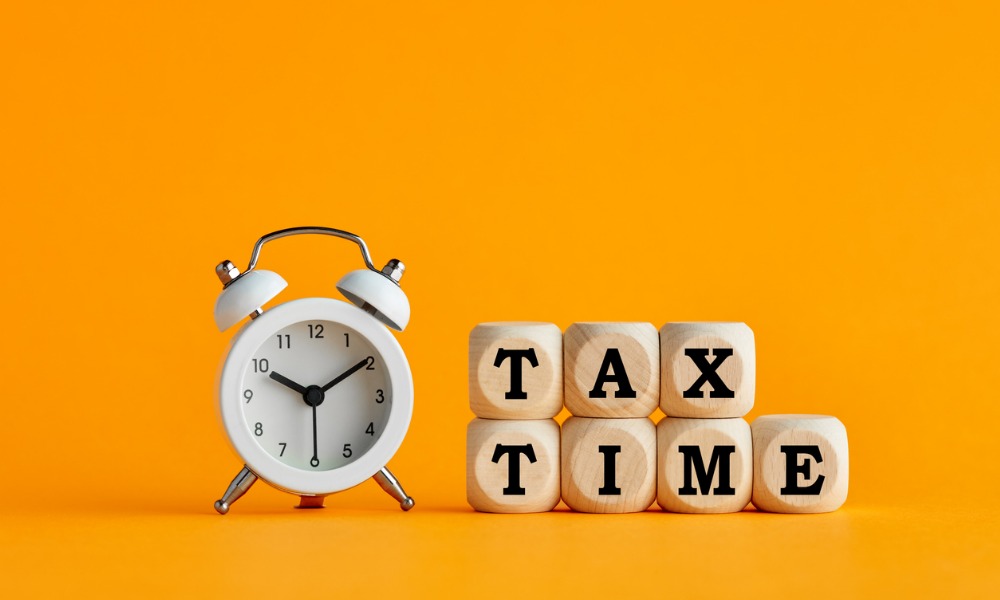Challenges include 'acronym paralysis,' tangle of eligibility rules, and tax calculation dilemmas, says financial planner

Even in the most typical of circumstances, tax season is a time of heightened stress for the average Canadian. But 2020 has been far from a typical year, and the avalanche of fiscal support that the government unleashed over the past 12 months has created a totally unfamiliar landscape of benefits and credits for taxpayers to navigate.
“I think most Canadians are going to be in acronym paralysis this year,” said Graham Plumb, CFP and founder of MOOLA Financial Coaches & Advisors in BC. “There’s a lot of research to do to figure out what category you were in, during what time period, what category you’re in now, and what benefits you can apply for.”
Over the past year, the federal government has unspooled numerous financial lifelines for pandemic-hit Canadians, including the Canada Emergency Response Benefit (CERB) and its replacement, the Canada Recovery Benefit (CRB); the provinces also came out with their own benefits specifically to help households within their jurisdiction stay afloat. Against this backdrop, countless first-time claimants of benefits are struggling, and even some longtime recipients of government aid may feel at a loss.
“There's a whole bunch of new support programs coming on board that if you don't know about, you might miss out on,” Plumb said.
Another difficulty for Canadians, he noted, is the fact that the new pandemic-related benefits are not tax-free, and the taxes people owe on them were not withheld at source. Of the millions who applied for CERB and other COVID-related benefits, many are likely just now realizing that fact, and are scrambling to scrape together the money to fulfill their tax obligations.
The disbursement of benefits hasn’t been a smooth process, either, as multitudes of people who collected financial aid later received letters from the Canada Revenue Agency (CRA) requesting that they pay the money back. That includes thousands of self-employed individuals who claimed CERB thinking that the income threshold for eligibility was based on past gross income, when in fact it was supposed to be net income – a misunderstanding critics blamed on unclear communications from the agency.
“I believe the Canadian government definitely had the best intentions,” Plumb said.
They were trying to get money into the hands of Canadians as quickly as possible, and we have to give them credit because a lot of other countries didn’t. But there's so many factors to consider when it comes to benefit programs, some of them can get overlooked in a rollout like this.”
Another potential source of confusion, he noted, is the work-from-home tax credit. While that credit has long been part of Canada’s tax system, many Canadians are accessing it for the first time ever. To simplify the claiming process, the CRA has introduced a simple flat-rate method under which eligible Canadians – among other conditions, they must have worked from home more than 50% of the time for at least four straight weeks in 2020 for COVID-related reasons – may claim $2 a day for every day they worked at home up to $400.
“If you choose the flat-rate method, you don’t have to complete a T-2200 form, and you’re not required to keep any documents to support your claim,” Plumb said. “Taxpayers can also use another addition and subtraction method, which is more detailed but could work out better for them as it reflects actual home office expenses paid.”
Once the dust settles, some Canadians may be fortunate enough to get a tax refund from the CRA, which they may either reinvest or use to pay down debt. From a purely mathematical standpoint, paying down a loan with an interest rate that’s higher than the expected return on their investments would be the better decision. But those working with a financial planner may also find putting money toward debt payments, even if they only have low-interest debt, is also a good choice.
“It pays to have a financial planner they can talk with and say ‘I know that this year, mathematically, I'm going to be a bit farther behind if I pay down my debt, but I’d still like to do it,’” Plumb said. “That does two things: it maybe sets them up better for the future in case of an unexpected financial event, and it can make them feel good and more comfortable with their life. At that point, who cares about math?”
On the flip side, some Canadians who relied considerably on CERB, CRB, or other benefits may find themselves owing the CRA for the first time ever because of unexpected taxes. For those who made less than $75,000 last year, Plumb said, the CRA has set up a website where they can apply for interest relief, giving them the opportunity to make payments on their taxes owed without having to pay interest until 2022.
“If you think you're going to end up owing money, make sure you file before the deadline so you can qualify for that interest relief,” he said.
With the deadline now just around the corner, the pressure’s well and truly on for taxpayers. The stress of new rules and pandemic uncertainty is weighing heavily on Canadian households, raising the risks of filing errors – and by extension, the need for expert advice – to levels as high as they’ve ever been.
“If there's any year you decide to engage a professional to complete your tax return for you, this is the year,” Plumb said. “It's going to cost you $100 if you're a simple T-4 employee, which I think is well worth it for the reassurance that you're not missing any benefits or requirements.”



